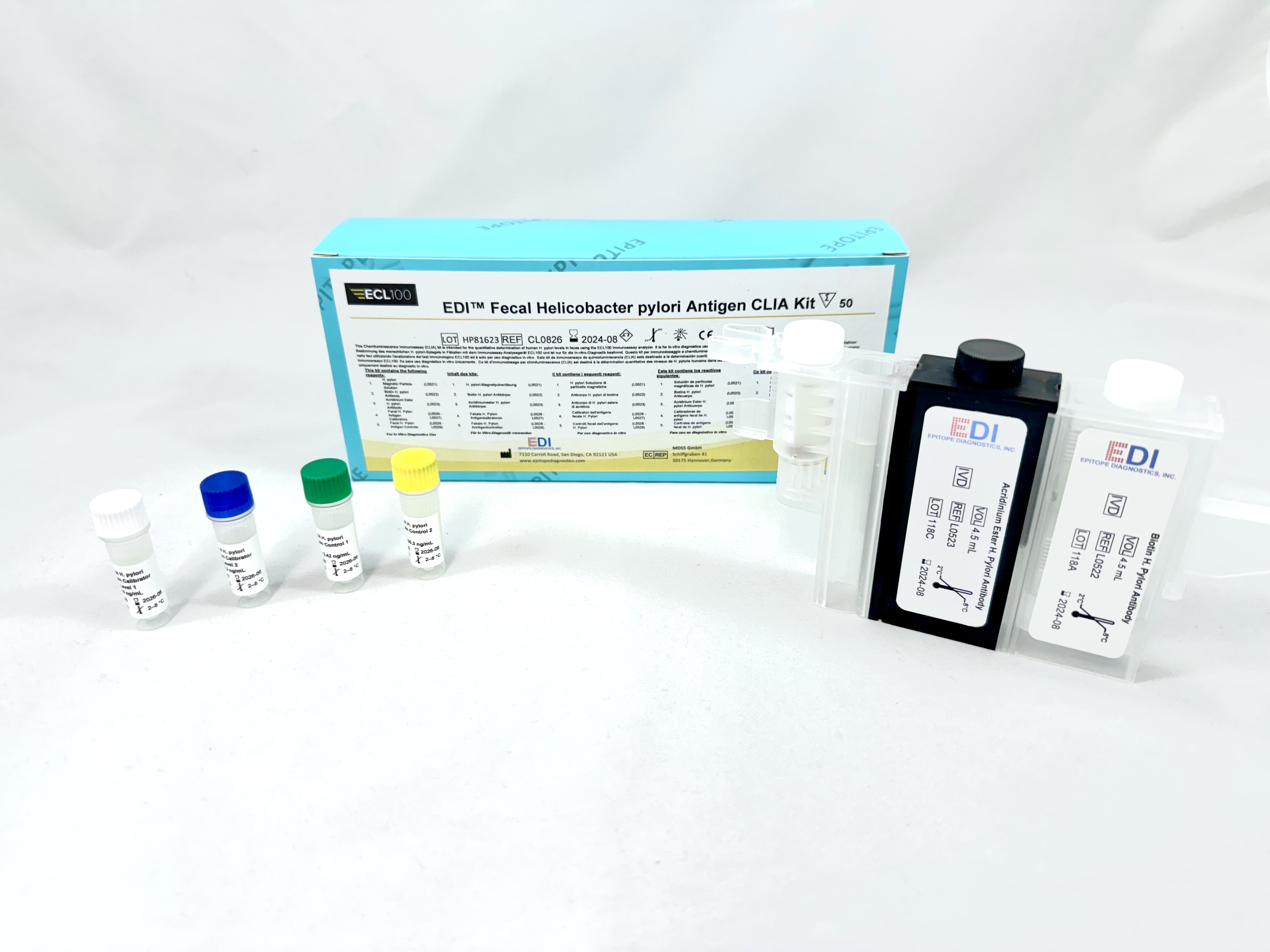Background
H. pylori (previously known as Campylobacter pyloridis) is a type of bacteria that infects the stomach and is a common cause of peptic ulcers. H. pylori bacteria can be passed from person to person through direct contact with saliva, vomit or fecal matter. H. pylori can also be spread through contaminated food or water. The infection is normally acquired during childhood. H. pylori usually goes undiagnosed until symptoms of a peptic ulcer occur. H. pylori infection is quite common and is present in about half the people in the world.
This “sandwich” ELISA is designed, developed and produced for the quantitative and qualitative measurement of H. pylori antigen in stool specimen. The assay utilizes the microplate-based enzyme immunoassay technique by coating highly purified antibody onto the wall of microtiter wells. Assay calibrators and extracted fecal specimen are added to microtiter wells of microplate that was coated with a highly purified monoclonal H. pylori antibody on its wall. During the assay, the H. pylori antigen will be bound to the antibody coated plate after an incubation period. The unbound material is washed away and another HRP-conjugated monoclonal antibody which specifically recognizes the protein of H. pylori is added for further immunoreactions. After an incubation period, the immunocomplex of “H. pylori Antibody – H. pylori Antigen – HRP�conjugated Anti-H. pylori Tracer Antibody” is formed if H. pylori antigen is present in the test sample. The unbound tracer antibody and other proteins in buffer matrix are removed in the subsequent washing step. HRP conjugated tracer antibody bound to the well is then incubated with a substrate solution in a timed reaction and then measured in a spectrophotometric microplate reader. The enzymatic activity of the tracer antibody bound to H. pylori proteins captured on the wall of each microtiter well is directly proportional to the amount of H. pylori antigen level in each test specimen.

